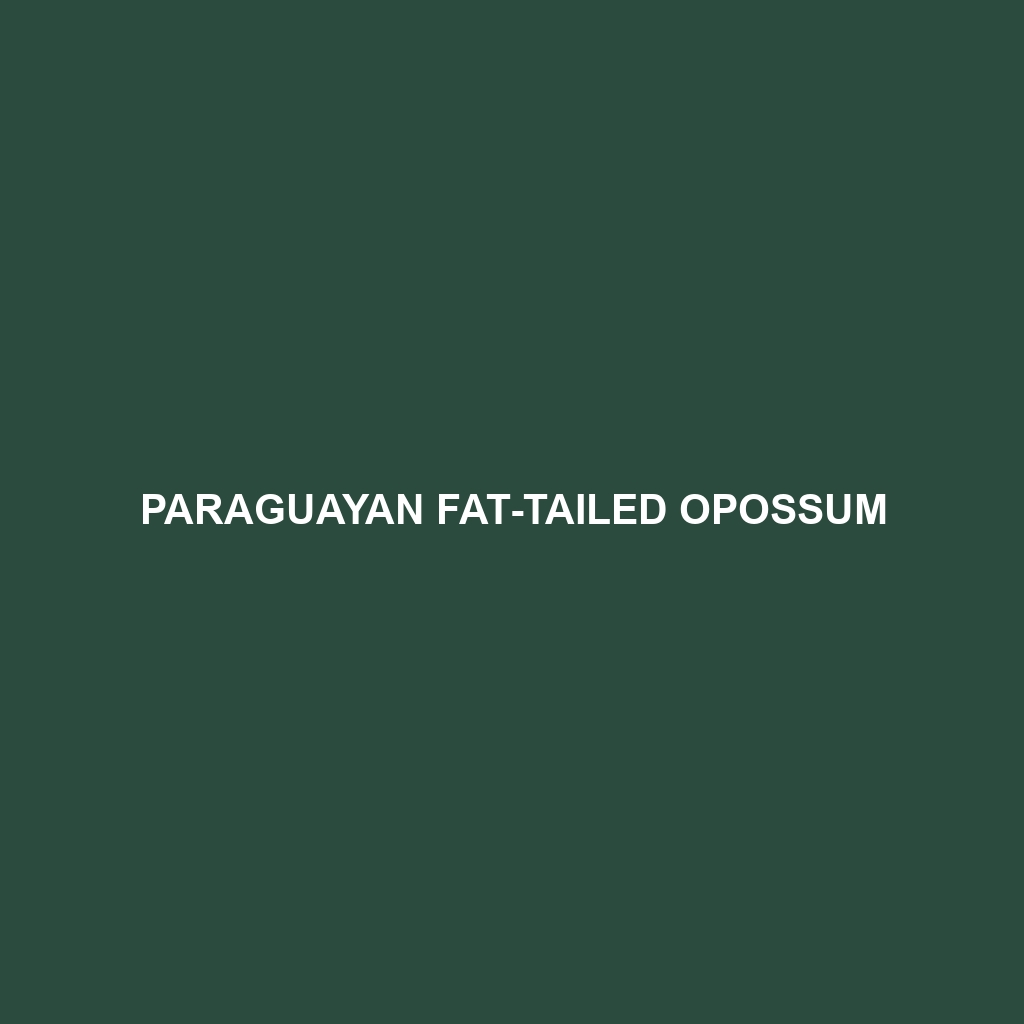The Pallid Fat-tailed Opossum (Thylamys pallidior) is a small, nocturnal marsupial found in various regions of South America, predominantly in Argentina, Bolivia, Chile, and Peru. Known for its distinctive fat-storing tail and pale coloration, this opossum is an intriguing member of the Didelphidae family. With its unique adaptations and behaviors, it plays a significant role in the ecosystems it inhabits.
Physical Characteristics
Size: The Pallid Fat-tailed Opossum is a small marsupial, with an average body length ranging from 10 to 15 centimeters (4 to 6 inches), excluding the tail, which adds another 8 to 13 centimeters (3 to 5 inches) to its length. It typically weighs between 20 to 50 grams (0.7 to 1.8 ounces).
Coloration: As its name suggests, this opossum has a pale, often ivory or light grayish-brown fur, providing excellent camouflage in its arid and semi-arid habitats. The underbelly is generally lighter, often white or cream-colored.
Special Features: One of the most distinctive features of the Pallid Fat-tailed Opossum is its tail, which, unlike most opossums, can store fat. This adaptation is crucial for surviving periods of food scarcity. Their large, prominent eyes are adapted for nocturnal living, while their sharp claws and prehensile tail aid in climbing.
Behaviors
Social Interactions: The Pallid Fat-tailed Opossum is primarily a solitary animal, coming together only during the breeding season. Males and females engage in brief interactions for mating, after which the males typically leave, and females take on the role of rearing the young.
Feeding Habits: This opossum is omnivorous, with a diet that includes insects, small vertebrates, fruits, and seeds. Its opportunistic feeding behavior means it can adapt to various food sources available in its environment, contributing to its ability to thrive in diverse habitats.
Ecological Roles: The Pallid Fat-tailed Opossum plays a vital role in controlling insect populations and dispersing seeds, aiding in plant propagation. As prey for larger predators, it is an integral part of the food web in its ecosystem.
Habitats
The Pallid Fat-tailed Opossum is versatile in its habitat preferences, occupying dry forests, shrublands, and grasslands. It is often found in areas with sparse vegetation where it can use its climbing abilities to navigate between shrubs and small trees. It seeks shelter in natural crevices, burrows, or nests made from leaves and grasses.
Adaptations
Fat Storage: The ability to store fat in its tail is a significant adaptation, allowing it to survive periods when food is scarce, particularly during the winter months.
Nocturnality: Being nocturnal helps it avoid many predators and hunt for food with less competition. Its large eyes enhance its night vision, making it an efficient hunter in low-light conditions.
Climbing Ability: The opossum’s sharp claws and prehensile tail are perfect adaptations for climbing, enabling it to escape predators and access food sources that are out of reach for many other animals.
Conservation Status
Currently, the Pallid Fat-tailed Opossum is listed as Least Concern by the IUCN Red List. Despite facing habitat destruction and fragmentation, particularly due to agricultural expansion, it has shown resilience and adaptability to changing environments. Ongoing conservation efforts focus on habitat preservation and mitigating human-wildlife conflicts.
Fun Facts
Tail Storage: Unlike many other species, the Pallid Fat-tailed Opossum can lose and regain weight rapidly, depending on the availability of food, thanks to the fat stored in its tail.
Marsupial Pouch: Female opossums have a marsupium, or pouch, where their young continue to develop after birth. This unique reproductive trait is a hallmark of marsupials.
Survival Skills: They are known to feign death, a behavior called ‘playing possum,’ to evade predators, a trait common to many opossum species.
In , the Pallid Fat-tailed Opossum is a resilient and adaptable marsupial with fascinating physical and behavioral adaptations that allow it to thrive in diverse and often challenging environments. Its ecological roles and conservation status underscore the importance of continued efforts to preserve its habitats.
